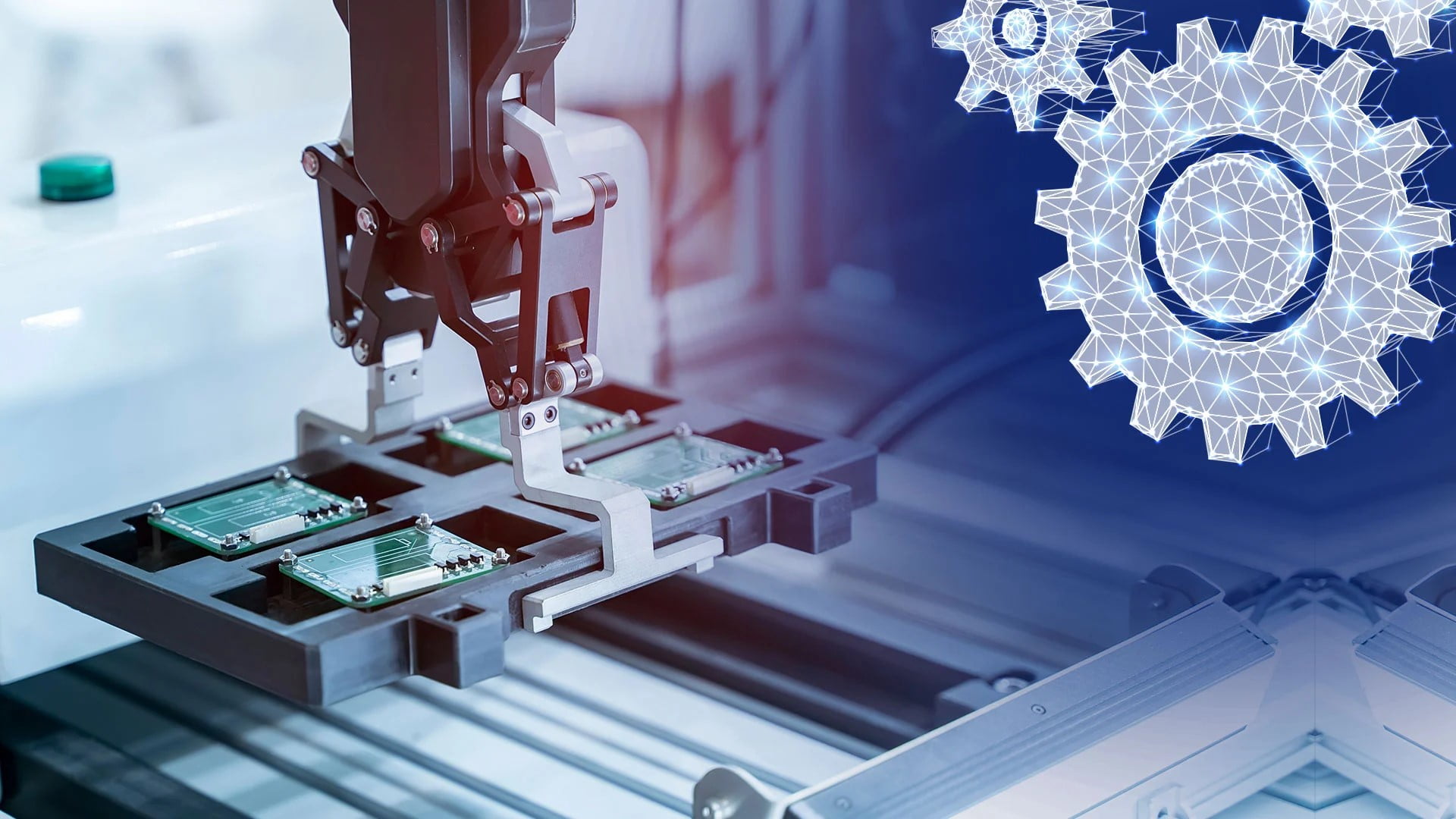Automation plays a crucial role in enhancing efficiency and productivity within the present-day manufacturing sector. The significance of printed circuit board assemblies (PCBAs) is central to this technological revolution as they are crucial for automated systems to function. This article delves into the specifics of PCB layout or assembly in industrial automation, addressing its significance, key procedures, and impact on various industries.
Understanding Industrial Automation PCB Assembly:
Industrial automation PCB assembly involves creating, producing, and putting together printed circuit boards that are customized for industrial automation uses. These Printed Circuit Board Assemblies are essential for automated systems, enabling electrical connections and components needed for control, monitoring, and operation.
Automation in industrial environments includes the implementation of control systems such as computers, robots, and information technologies to manage various processes and machinery. PCBAs play a crucial role in this situation by containing the circuits and components necessary for the smooth operation of the automation equipment.
The Role of PCBAs in Industrial Automation:
PCBAs play a crucial role in industrial automation for multiple reasons. They offer the necessary framework to combine different electronic parts into a unified system. This integration enables accurate management, instant monitoring, and effective operation of industrial equipment.
- Control Systems: In control systems, Printed Circuit Board Assemblies (PCBAs) play a crucial role in managing the input and output functions of industrial equipment. They ensure accurate handling of signals from sensors and actuators, enabling precise control of machinery and processes.
- Communication Interfaces: In industrial automation, communication interfaces are frequently required to enable communication between different devices and systems. PCBAs facilitate this communication by providing interfaces for transferring data and processing signals.
- Power Distribution: Printed Circuit Board Assemblies oversee the allocation of power to various components within an automated system. They ensure that each part of the system receives the appropriate power to operate effectively.
- Signal Processing: Numerous industrial automation duties require the processing of both analog and digital signals. PCBAs are created to manage these signals, transforming them as necessary to promote precise and dependable system functioning.
Key Processes in Industrial Automation PCB Assembly:
The PCB assembly process in industrial automation consists of multiple crucial stages, all essential to ensure the final product meets required performance and reliability criteria.
- Design and Engineering: Creating the circuit board is the initial stage of PCB assembly. This includes making a visual representation, outlining the design, and choosing suitable parts. The design stage is important as it defines the operational capabilities and efficiency of the end product.
- Component Sourcing: Sourcing components follows the design completion in the component sourcing process. This involves selecting and purchasing electronic parts such as resistors, capacitors, microcontrollers, and connectors. The choice of components impacts both the overall performance and reliability of the PCB.
- Manufacturing: The PCB is fabricated based on the design specifications in the manufacturing process. This entails tasks such as etching circuit patterns onto the surface, applying solder resist coatings, and creating vias and perforations. Ensuring the board meets the necessary standards requires a high level of accuracy.
- Assembly: Assembly refers to the process of connecting electronic parts to the PCB. This can be accomplished by utilizing either surface mount technology (SMT), through-hole technology (THT), or a combination of both. Automated assembly machines are frequently used for accurate positioning and soldering of parts.
- Testing and Quality Assurance: After being assembled, the PCB undergoes extensive testing to ensure it functions correctly. This consists of electrical testing, functional testing, and visual inspection. Quality control is essential to detect and fix any faults or problems prior to the PCB being incorporated into the ultimate automation system.
- Integration and Deployment: The last stage includes merging the assembled PCB into the industrial automation system. This involves linking it to other parts and systems, conducting last examinations, and implementing the system in a practical environment.
Benefits of Industrial Automation PCB Assembly:
The use of PCBAs in industrial automation offers various advantages that improve efficiency and productivity in manufacturing environments.
- Enhanced Reliability: Printed circuit board assemblies are designed to withstand the challenging conditions often found in industrial settings. Made with strong materials and put through thorough testing to guarantee durability and dependable operation.
- Increased Efficiency: Automation systems equipped with high-quality PCBAs are capable of operating with increased precision and quicker pace. This leads to higher process efficiency, reduced downtime, and improved overall productivity.
- Cost Savings: Businesses can save a significant amount of money by automating tasks and using Printed Circuit Board Assemblies for managing and communicating. Automation reduces the need for manual labor and lowers the risk of errors, leading to decreased operational costs.
- Scalability: Scalability in industrial automation systems is enabled by printed circuit board assemblies (PCBAs). As the need for production grows, automation systems can be expanded or adjusted easily by adding more PCBAs or enhancing current ones.
- Flexibility: Contemporary PCBAs provide flexibility in both design and functionality. This enables customization of automated systems to fit particular needs and adjust to evolving operational demands.
Challenges in Industrial Automation PCB Assembly:
Despite the significant advantages of utilizing industrial automation for PCB assembly, manufacturers must also overcome various obstacles to maintain top-notch performance and dependability.
- Complexity of Designs: Increase in complexity of PCB designs is observed as automation systems advance. Handling this level of complexity demands advanced design tools and knowledge to guarantee the smooth operation of all components as a whole.
- Thermal Management: Industrial settings frequently contain high temperatures and fluctuating conditions that require effective thermal management. Effective management of temperature is essential in order to prevent PCBAs from overheating and prolong their life span.
- Environmental Factors: When designing PCBAs for industrial automation, it is important to take into account environmental factors such as dust, moisture, and vibrations. The components may require special coatings and encapsulations for protection.
- Component Sourcing and Obsolescence: Sourcing reliable components can be challenging, especially with obsolete or hard-to-find parts. Manufacturers must efficiently manage their supply chains to ensure components are available when needed.
- Regulatory Compliance: Adherence to industry standards and regulations is essential for PCBAs utilized in industrial automation in order to meet regulatory compliance. Making sure everything is in line requires thorough documentation and strict adherence to set protocols.
Trends and Innovations in Industrial Automation PCB Assembly:
The industry of PCB assembly for industrial automation is constantly evolving, as new trends and advancements shape the future of manufacturing.
- Miniaturization: Miniaturization is becoming more crucial with the shrinking size of electronic devices, creating a growing demand for smaller PCBs. Technological progress is enabling the development of smaller, more efficient PCBAs while still maintaining their functionality.
- Internet of Things (IoT): The surge in demand for advanced PCBAs in industrial automation is on the rise due to the integration of IoT technology. These PCBs help devices connect and transfer data, enhancing automation capabilities and supporting smart manufacturing.
- Advanced Materials: Cutting-edge materials are being developed for PCB manufacturing to improve performance and reliability. Using high-frequency materials and advanced substrates is helping to meet growing demands in high-speed and high-frequency applications.
- Flexible and Printed Electronics: Innovations in flexible and printed electronics are opening up fresh possibilities for PCB design and production. These technologies facilitate the creation of versatile, light, and adjustable PCBs appropriate for a range of uses.
- Automation in PCB Assembly: The use of automation in PCB assembly is increasing. Automated machines and robots are employed to improve efficiency, accuracy, and consistency in the manufacturing and assembly of PCBAs.
The Future of Industrial Automation PCB Assembly:
In the near future, the PCB assembly sector for industrial automation is expected to see continued growth and progress. As technology continues to progress, PCBAs will play an increasingly important role in boosting the effectiveness and functions of automated systems.
Integrating innovative technologies such as AI, machine learning, and advanced robotics will enhance the productivity and efficiency of industrial automation systems. PCBAs will have a key role in these developments, enabling greater precision, flexibility, and intelligent features in manufacturing processes.
Furthermore, the focus on sustainability and environmental responsibility will result in the development of eco-friendly PCB materials and manufacturing methods. Companies will prioritize reducing their environmental impact while maintaining high standards of performance and reliability.
Conclusion:
PCB assembly is essential in contemporary manufacturing for industrial automation, providing the required electrical base for reliable and efficient automation systems. The importance of PCBAs in control, communication, power distribution, and signal processing underscores their essential contribution to enhancing productivity and innovation across various sectors.
Although complex designs, environmental factors, and component sourcing present challenges, the advantages of PCBAs are too significant in industrial automation to be overlooked. As technology progresses, PCBAs will continue to lead in advancements, allowing for more efficient manufacturing processes that are smarter.
By adopting the most recent developments and advancements, producers can utilize the potential of automated industrial PCB assembly to reach higher levels of efficiency and prosperity. The upcoming potential of industrial automation is promising, with PCBAs maintaining their pivotal position in developing future automated systems.

















